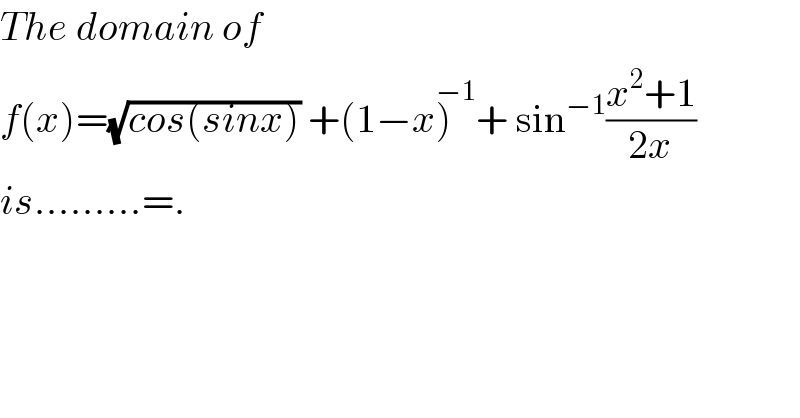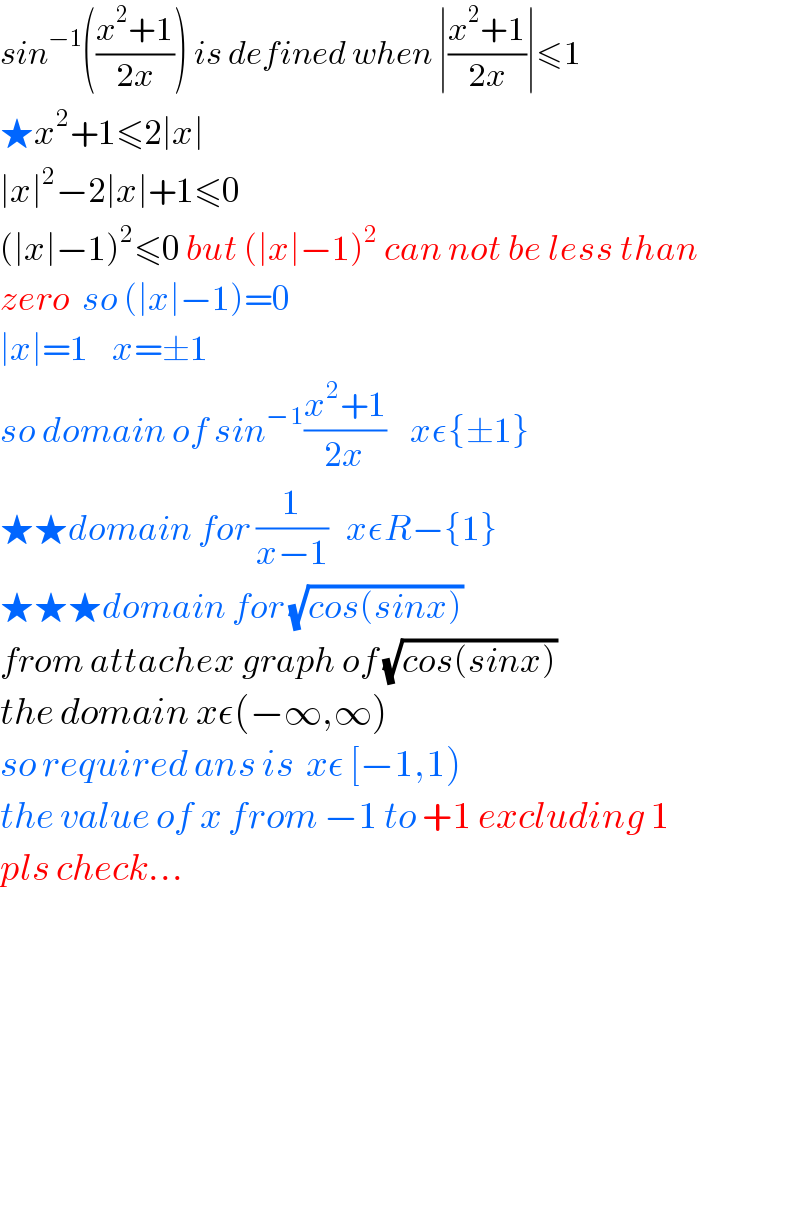
Question and Answers Forum
Previous in Relation and Functions Next in Relation and Functions
Question Number 44369 by Necxx last updated on 27/Sep/18

Commented by Necxx last updated on 28/Sep/18

Answered by tanmay.chaudhury50@gmail.com last updated on 28/Sep/18

Commented by tanmay.chaudhury50@gmail.com last updated on 28/Sep/18

